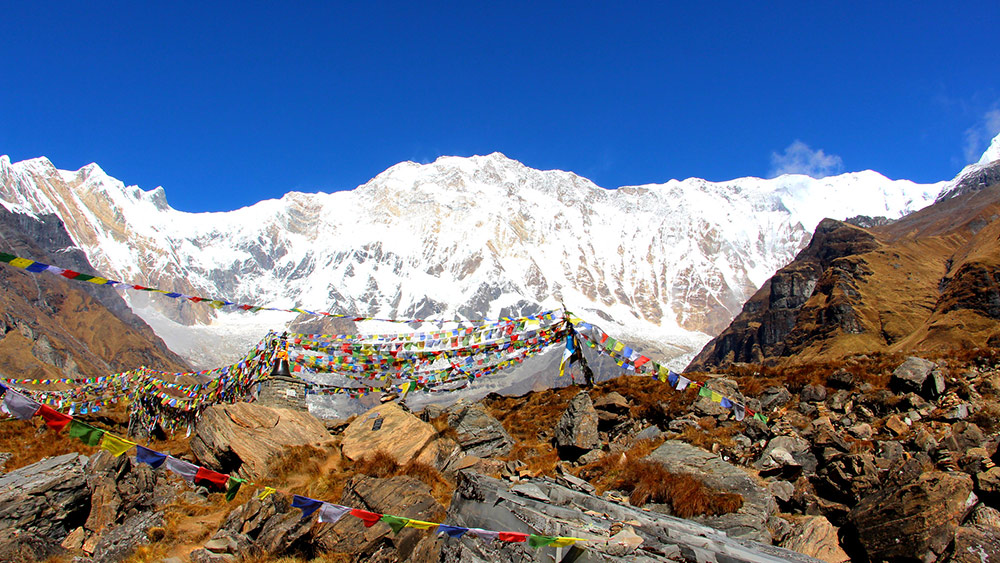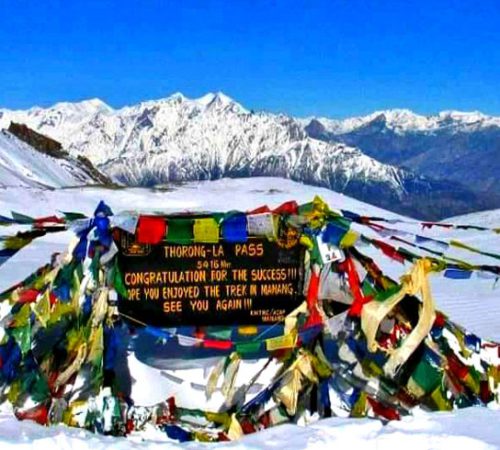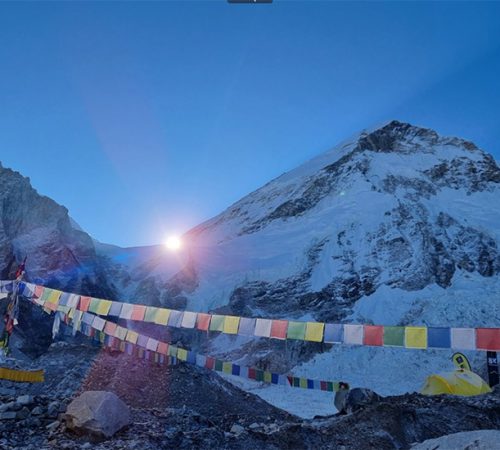- Duration: 13 Days
- (based on 2 reviews)
Trip Facts
-
Trip Start and End
Kathmandu/ Kathmandu
-
Difficulty Level
Moderate
-
Trip Area
Annapurna Region
-
Maximum Altitude
4110m - ABC
-
Best Season
Summer & Spring
-
Meals
Full Board
-
Accommodation
Teahouse/Lodge
-
Transportation
Flight, and Jeep or Bus
Highlights
- Adventurous steep trail walk in Ulleri
- Enchanting sunrise views from Poon hill and Annapurna Base Camp
- Awesome sunset view over Annapurna ranges and nearby mountains
- The picturesque and breathtaking natural beauty of the villages and snowy mountains
- Lovely culture and lifestyle of the Pun ethnics in Ghorepani
- Natural Hot spring bath in Jhinu Danda
Trip Overview
Annapurna Base Camp Trek is a widely popular classic trek. The trek is abundant with variations of depths, elevations, picturesque beauty, snow-capped 10th highest Mt. Annapurna, and beautiful rhododendron and oak forest. This ABC trek journey takes you to the wonderful villages of local habitats following their own culture and lifestyle. The enchanting sunrise views from Poon hill and Annapurna Base Camp are phenomenal. The sunset view from the Annapurna Base is another plus point. The ice cave en route to Machhapuchhre Base Camp looks impressive. The close-up views of the Annapurna ranges and other mountains are heavenly. The natural hot spring bath in Jhinu Danda gives complete healing and relaxation to the mind and body. Overall, the Annapurna Base Camp trek is an unforgettable trekking experience guaranteed.Daily Itinerary
+ Show MoreWelcome to Kathmandu, Nepal. Our representative receives you and transfers you to the hotel. Spend your time relaxing and later exploring nearby places if time permits. Prepare a backpack for the trekking and overnight in a hotel.
- 1350m
Cost Includes
- All land transportation and domestic flights as required for the trip itinerary
- Pick-ups and Drop-offs in a private vehicle at the airport (Arrival & Departure)
- Hotel Accommodations (Bed & Breakfast) in the city
- 3-course meal (Breakfast, Lunch, & Dinner) during the entire trek
- Accommodations in teahouses/guesthouses/lodges and tented camps as per the nature of the trek
- Necessary trek permits, national parks, and restricted areas entrance fees
- Tent camps equipment, kitchen equipment for camping treks
- First-aid Medical Kits
- Experienced and government license holder English-speaking trekking guides
- Porters (2 trekkers: 1 porter), supporting crews, cooks, & asst. cooks (depending on the nature of the trek)
- Allowances for crew staff including insurance on medical grounds
- All government taxes, official charges
- Emergency rescue (if needed)
Cost Excludes
- International Airfare
- Nepal Entry Visa Fees
- Airport taxes at the time of departure
- Personal Expenses
- Additional charges in the tea/guesthouses (Wi-Fi, electricity charge, hot shower, laundry, boiled water)
- Meals (Lunch & Dinner) in Kathmandu
- Extra night’s stay accommodation and meals in Kathmandu
- All kinds of Alcoholic & Non-alcoholic Beverages, Mineral Water
- Personal Trekking Gears
- Emergency Rescue cost & Travel Insurance cost
- Tips to the supporting crew members (guides, porters, drivers) after the trip completion
- All expenses need to be bear themselves in case of political instability & unforeseen events
Departures Dates
| Start Date | End Date | Price (USD) | Availability | Booking |
|---|
Trip Reviews
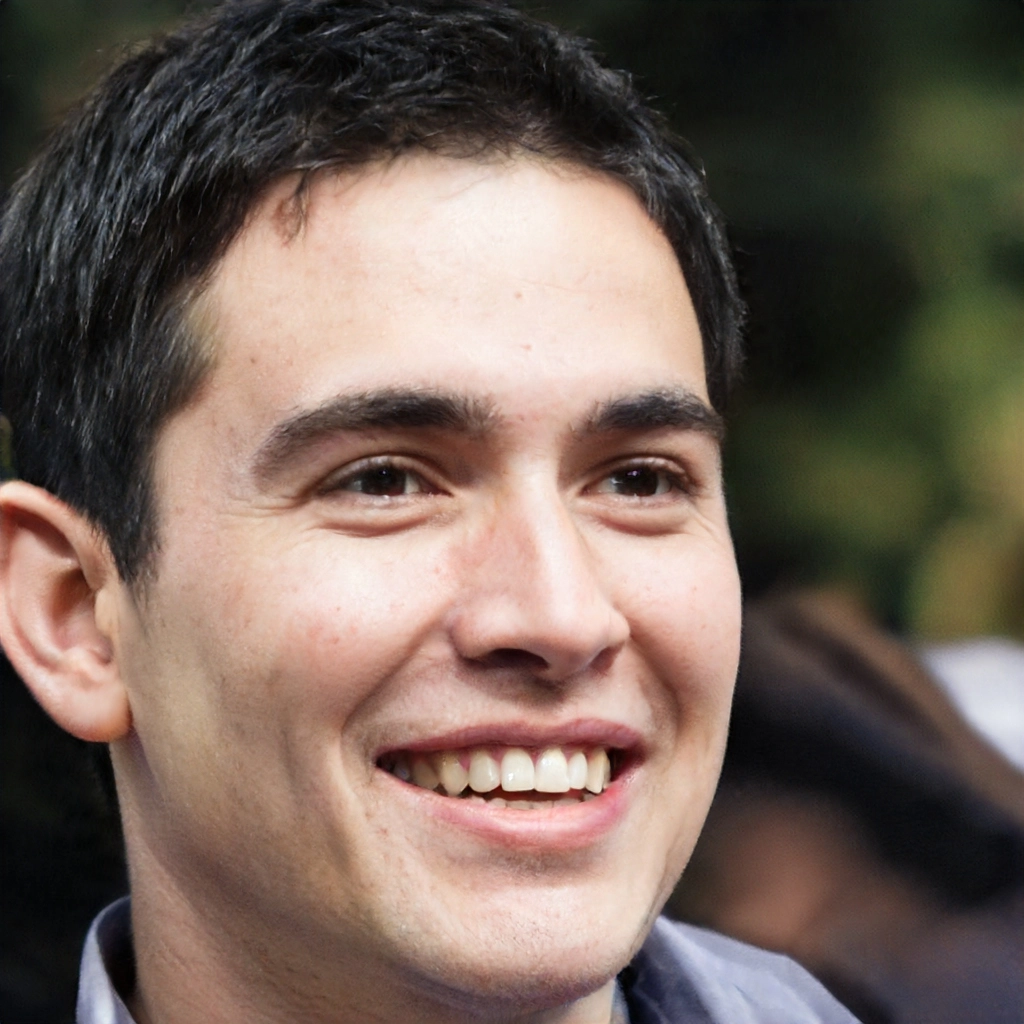
Everest Base Camp Trek

American Samoa
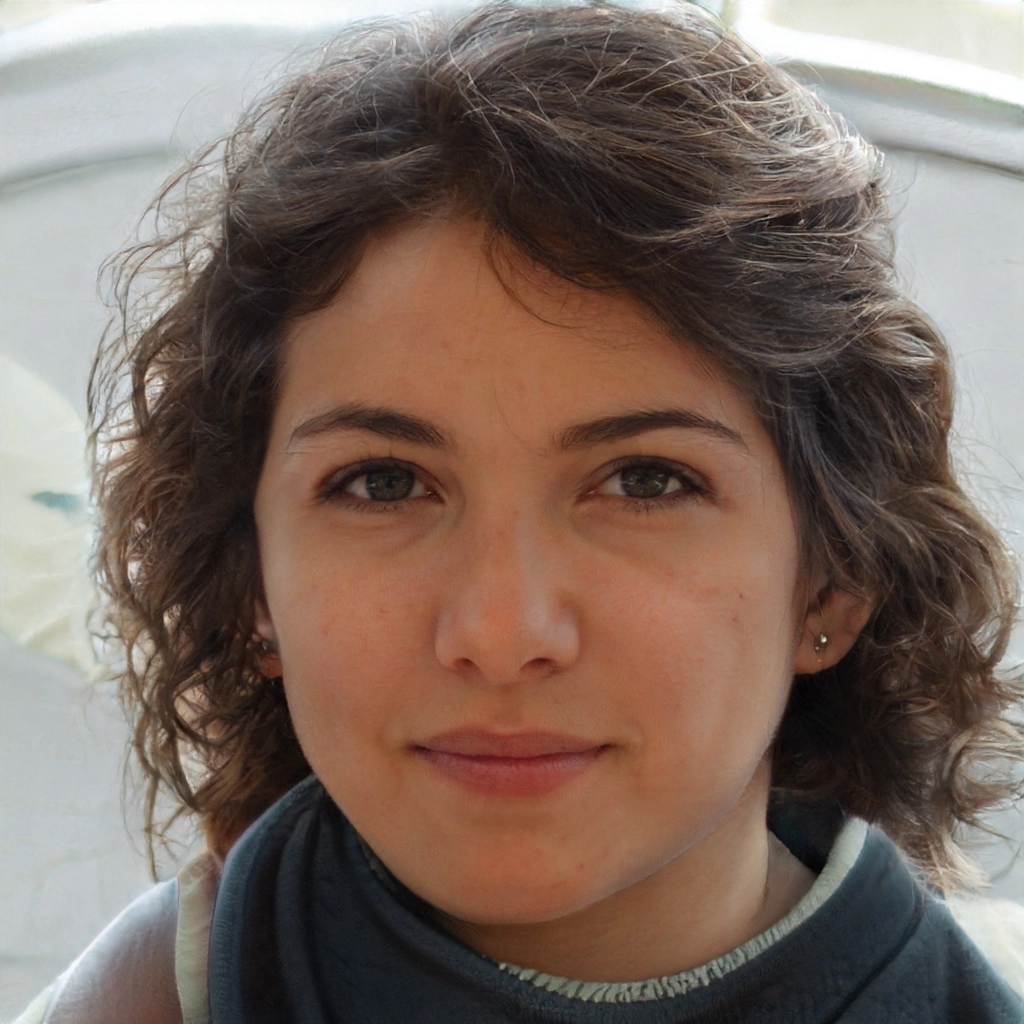
Annapurna Circuit Trek

Guidelines/Information
Accommodation
Teahouses/Guesthouses/Lodges are means of accommodation in the Annapurna Region. The hotel is the accommodation in the city. Camping tents are accommodations for camping treks or in the higher regions of unexplored or off-beat treks in this region. Teahouses are generally simple and comfortable with basic facilities. But, trekkers must pay additional charges for the use of Wi-Fi, electronic device charges, hot water buckets, laundry, and boiled water. In the case of camping treks, camping and kitchen equipment are provided.
Meals
Only Breakfast is provided during the hotel stay in the city. The full 3-course meal (breakfast, lunch, and dinner) is provided during the trek. The meals are basic but healthy, hygienic, and appropriate for the trekkers’ health. Fresh homegrown vegetables are served in most parts of the trek. Nepali Dal-Bhat is the main dish served with vegetable curry, and pickles which is a good source of energy for the trekkers. The meal varieties are fewer during the trek. Besides Dal-Bhat, noodles, soups, hot drinks, roti, and fresh curries are served. In the case of the camping treks, a professional cook accompanied the trek. The cook prepares healthy food during the camping treks.
Drinking water
Water drinking during the trek is very essential as it keeps the body hydrated. In the Annapurna region, drinking water is available everywhere. One can purchase a mineral water bottle or fill up the water at the teahouses. If one needs boiled water, pay an additional charge. But, remember to carry water purifying solutions/kits for safe water treatment and to stay safe & healthy. Also, carry your personal water bottle to minimize the risk of using plastic bottles and keep the environment safe.
Communication
Mobile networks and internet facilities are easily accessible in the lower regions of the Annapurna region. The network connections are fair and stable. One can pay an additional charge to use the internet facilities in the lower region. But, in the higher regions of the Annapurna, the connections are unstable or not at all. Also, for using the phone and internet, one can purchase a local Sim and use the internet facility from the data packs.
Required Permits
- ACAP permit cost charge: NPR 3000 (Foreigners), NPR 1000 (SAARC)
- TIMS permit cost charge: NPR 2000 (Foreigners), NPR 600 (SAARC)
Travel Insurance
Travel Insurance is compulsory while trekking in Nepal. It acts as a safety tool that prevents unforeseen and unwanted events during the travel journey. One must get travel insurance from a trusted insurance company. It must cover all emergencies, flight cancelations, loss/theft of luggage, altitude over 3000m, evacuations, and medical difficulties. Travel Insurance makes your journey stress-free.
Safety and our guides
The client’s safety is our topmost priority. So, when it comes to safety one can 100% trust us. Our guides are certified and have years of experience in this field. They are aware of the technical difficulties, altitude sickness, and health of the trekkers in the mountains. Thus, they are fully prepared and always carry necessary medical kits, safety tools, and experts in safety performances. From day 1 to the end of the trek, the client’s safety is taken into consideration and kept as a high priority. Therefore, all the program itineraries are carefully planned and scheduled with proper acclimatization and rest days to prevent altitude sickness and adapt to the higher altitude. We are 24/7 available at your service. Hence, feel free to ask queries and share your thoughts.
Best time for Annapurna Region Trek
All seasons have their beauty. But, when it comes to trekking in the Annapurna region, Spring and Autumn seasons are termed best. These two seasons are the best time to explore as the weather is clear, the days are bright, and trekking trails are easy to walk. During Spring, witness the blossoming seasonal flowers in this region. Spring and Autumn season is followed by the Summer season to trek in the Annapurna region. Winter and Rainy seasons are riskier due to muddy, slippery, and snowy trails. The weather is also uncertain and the chances of the temperature rising are high making it cold for the trekkers. It is advisable to properly plan before trekking in the rainy and winter seasons in the Annapurna region.
Annapurna Region Trek Difficulty
Annapurna Region’s Trek is easy to moderately challenging depending on the trek duration, elevation, and trail structure. The trek trails may include several steep ascends, and descends, rugged trails, and high elevations. The trek difficulty is the part of the trekking journey which is unavoidable. But, to minimize the difficulty during the trek, trekkers must be physically and mentally fit before the start of the trek. Trekkers can take part in physical training, exercises, short day hikes, cardiovascular exercises, and healthy diets. Take essential health tests and keep yourself motivated before the trekking journey. Here in Nepal, our assistance is always there throughout the trekking journey.
Altitude Sickness and Acclimatization
Altitude sickness is common at an altitude above 3000m. Here in Nepal, during trekking, altitude sickness chances are high. The high elevation, the weather, and the temperature play a key role. Thus, to prevent altitude sickness acclimatization is quintessential. Thus, the acclimatization rest days are carefully scheduled to adapt to the surroundings. All age groups and even healthy people can suffer from altitude sickness. But, no need to panic as its symptoms and precautionary advice is given below:
Altitude Sickness Symptoms
The symptoms of altitude sickness are primary at the initial stage and get extreme if primary symptoms are not taken into consideration.
Primary symptoms: Headache, vomiting, breathlessness, loss of appetite & sleep, tiredness, vertigo
Extreme symptoms: primary symptoms along with delusions & unconsciousness
Precautionary Advice
- Inform the guide immediately
- Stretch the body and do warm up before the start of the trekking journey
- Keep yourself hydrated by drinking water at regular intervals
- Urinate frequently throughout the journey
- Keep it slow and steady
- Take proper rest and sleep
- Avoid taking salty and unhygienic foods
- Avoid consuming alcohol, and smoking
- If it feels uneasy or difficult, immediately descend
- Consult a guide to take a medicine
Porter Luggage limitation
One porter is assigned to carry the luggage of two trekkers. The luggage limitation is a maximum of 15 kg per trekker.
Equipment checklist
Essential Documents
Passport, Travel Permits, Visa Photocopy, Passport size photos
Food
Light snacks, Energy bars, and drink mix
Shoes
Camp shoes, Pair of hiking boots, Rubber sandals
Clothes
Windcheater jacket, Thermals, Insulating Down Jacket, Fleece, Long sleeve shirts, Gloves, Towels, Inner garments, Trekking pants, Trousers, Shorts, Socks, Raincoat, Balaclava, Bandana, Gaiters
Accessories
Sunglasses, Hats/Caps, Sunscreen, Lip Balm, Water bottles, Pocket Knife, Solar chargers, Batteries, Head Lamps, Torch, Umbrella, Sewing kit, Water Purifying solution kits, reusable bags to deposit waste, and separate clean/dirty clothes
Equipment & Gears: Warm Sleeping bags, Map, Trekking poles, Duffel bag, Carabiners, Crampons, Tapes/Slings, Ice Screws, Ice Ax, Harness, Rope, Spikes
Medicine: First-Aid Kit, Altitude sickness medicines, Insect repellents, Blister kits, Approved medicines
Rainy season: Waterproof clothes, boots, Raincoat, Anti-leech socks
Winter Season: Light woolen clothing items
Personal Hygiene Kit: Hand sanitizer, wet wipes, napkins, sachet shampoo, moisturizer, hand wash/soaps, toothbrush, toothpaste, comb/brush, razor, and for ladies (menstrual kits)
Note: One can customize the above list. Only bring necessary items from the provided list from your home or one can rent or purchase here in Nepal.
Annapurna Base Camp Trek FAQs
faq ans
ans2

